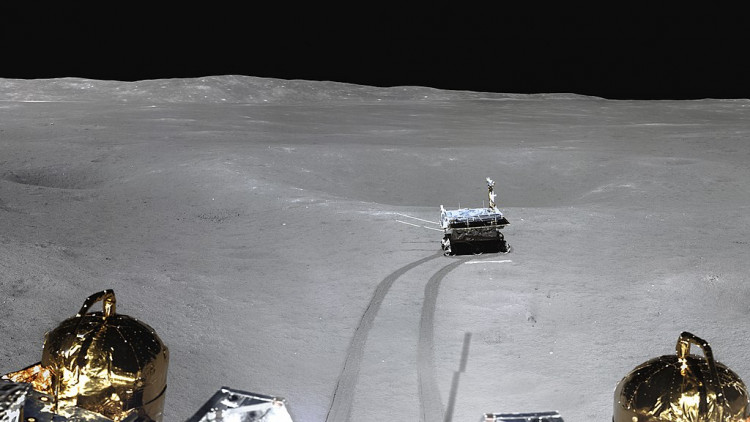A new lunar material in the form of a crystal has been discovered by Chinese scientists in samples taken from the moon in 2020.
Changesite-(Y) is a phosphate mineral and columnar crystal that bears the name of Chang'e, the lunar goddess of Chinese mythology. It was discovered in lunar basalt particles that were being analyzed in Chinese facilities.
Researchers at the Beijing Research Institute of Uranium Geology made the discovery after utilizing X-ray diffraction to examine particles gathered from the moon and finding a single crystal of Changesite-(Y).
On Sept. 9, a press conference was held to announce the discovery. According to Chinese official media Global Times, the International Mineralogical Association's Commission on New Minerals, Nomenclature, and Classification (CNMNC) certified it as a new mineral.
Following the U.S. and the former Soviet Union, which conducted the Apollo crewed lunar landings and Luna sample return missions, China is the third country to find a new lunar mineral.
The Chang'e 5 mission, the first lunar sample return mission since the 1970s, arrived in Oceanus Procellarum in December 2020.
The mission acquired 3.81 lbs (1.73 kg) of lunar samples and successfully returned them to Earth for analysis, resulting in a number of discoveries.
Chang'e 6 is anticipated to be China's subsequent moon expedition. It will make an effort to gather the first samples from the moon's far side.
Several payloads from overseas partners will also be carried by the Chang'e 6 mission. For the purpose of researching the element radon and how it escapes from the lunar regolith, France will offer a detecting device called DORN.
A laser retroreflector, which is a device used to reflect light back to its source, will be made available by Italy's National Institute of Nuclear Physics (INFN), enabling researchers to quantify the travel time and transform the results into an exact distance. All three Apollo missions-11, 14, and 15-included laser-ranging retroreflectors.
Other contributions have been preliminarily chosen from Russia and Sweden, according to Hu Hao's announcement. The combined China-Russia instrument will look for the existence of surface water ice, while the Swedish contribution will look for negative ions.
Chang'e 6 will need the assistance of a relay satellite beyond the moon to connect with the earth because the far side of the moon never faces Earth. This is due to tidal locking, which occurs when a planet's gravity slows a moon's rotation so much that it takes the same amount of time to revolve as it does to orbit its planet. The Queqiao satellite has served as a relay for Chang'e 4 and may be able to aid Chang'e 6.






